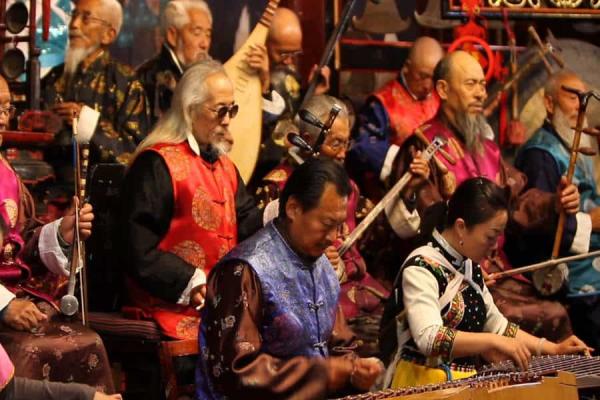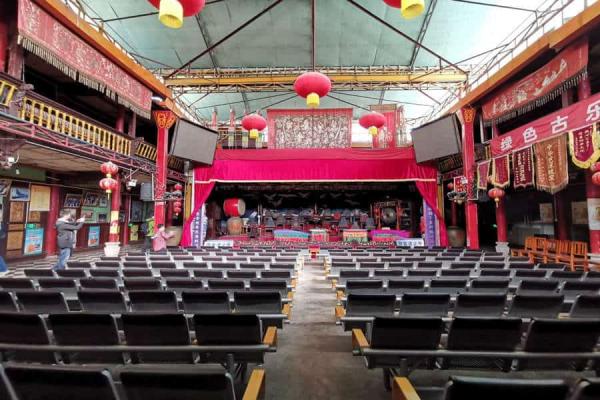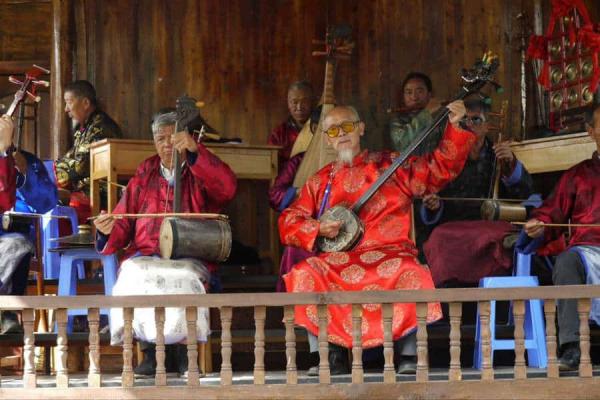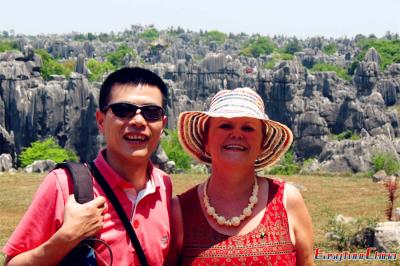Naxi Ancient Music
The Naxi (also spelt Nakhi and Nahi) are an ethnic group inhabiting the foothills of the Himalayas in the northwestern part of Yunnan Province, as well as the southwestern part of Sichuan Province in China. Naxi Ancient Music is a type of folk music unique to the Naxi people in Lijiang area of Yunnan Province and the traditional Naxi classical music is regarded as a 'living fossil of Chinese music'. Whenever walking on the ancient streets of Lijiang Old Town, visitors will undoubtedly hear the wonderful Naxi Ancient Music. What a unique experience during Lijiang tour.
With an evolution of 500 hundred years, integrating Taoist rite, Confucian ceremony, and the literary lyrics, poetic topics and musical tones of the Tang, Song and Yuan Dynasties, Naxi Ancient Music has formed its own unique style and traits. The music is composed of three styles: Baisha Fine Music, Dongjing Music and Huangjing music, however, it is a pity that Huangjing music has been lost. Among these styles, Baisha Fine Music ranks as one of ancient China's few large-scale, classical orchestral forms of music and has 24 'qupai' (tunes) which are archaic, simple and elegant in style, and exquisite, euphonious and energetic in character.

Naxi Ancient Music Facts
-Chinese name: 纳西古乐
-The origin time: In the 14th century
-Music Type: Percussion
-Nationality: Naxi Nationality
-Famous inheritor: Xuan Ke, Zhou Shanfu, Yang Zenglie
The Characteristics of Naxi Ancient Music
Naxi Ancient Music originated in the 14th century, it is the oldest music in Yunnan province and one of the oldest music in the world. Naxi ancient music is known as “musical fossil”. It combines many ancient musical elements with a variety of national instruments to play solemn and elegant music. Naxi Ancient Music has three main characteristics: the repertoires of Naxi Ancient Music are very old, the musical instruments are very old, the performers are old (most of them are 70~80 years old). People who have heard this kind of ancient music will not only feel the antiquity and civilization of Naxi Ancient Music, but also appreciate the extensive and profound of Naxi Ancient Music. Some people describe the performance of Naxi Ancient Music as seeing a 100 years old man playing 700 years old music with 200 years old musical instruments.
Naxi Ancient Music is old, but is has been flourishing for more than 500 years. Naxi Ancient Music is not only popular with Naxi people, but also favored by many countries in the world. When the Naxi Ancient Music was first performed in public in the 1980s, Xuan Ke (the president of Naxi Ancient Music Research Association) found that many audiences would leave in the half of the performance. Therefore Xuan Ke with his amazing speech talent and English ability, introduced the history of Naxi Ancient Music, repertoires, musical instrument and so on, so that the audience understand and love Chinese classical music gradually.
The performance at Naxi Concert Hall in Lijiang ancient city attracts audiences from all over the world every night. To enjoy Naxi Ancient Music which is known as “living fossil” has become an indispensable part for many people when they travel in Lijiang. Naxi Ancient Music has become a very important cultural brand in Lijiang tourism.

The Musical Instruments and the Band of Naxi Ancient Music
According to the different playing methods, the instruments of Naxi Ancient Music can be divided into three groups. The first group is blowing instrument which includes recorder, fife, reed pipe. The fife is the main instruments, and the reed pipe is a unique bamboo instrument of Naxi nationality. The second group is plucked string instrument which includes Chinese zither, Chinese lute, Su gudu and so on. Chinese zither is not used anymore. The third group is the stringed instrument, it only has Erh huang. The composition of Naxi ancient music band is not fixed. According to the performance occasion, it can range from 3 to 10 people. The two most common combinations are 8-person group and 10-people group. The arrangement of the band has certain rules as well, the band must be on the right side of the platform and the performers are ranked in the order of their age. The older performers in the front and the younger performers in the back.
The performance ways of Naxi Ancient Music are sitting and walking. Seated performances are a kind of chamber music that involves more than 20 musical instruments, including wind instruments, such as the di zi, lusheng (a kind of reed pipe wind instrument), guan zi, and percussion instruments, such as the zuo gu (sitting drum), war drum, du gu (single drum), big and small cymbals, big gongs, a slit drum, etc.

More Attractions in Lijiang


